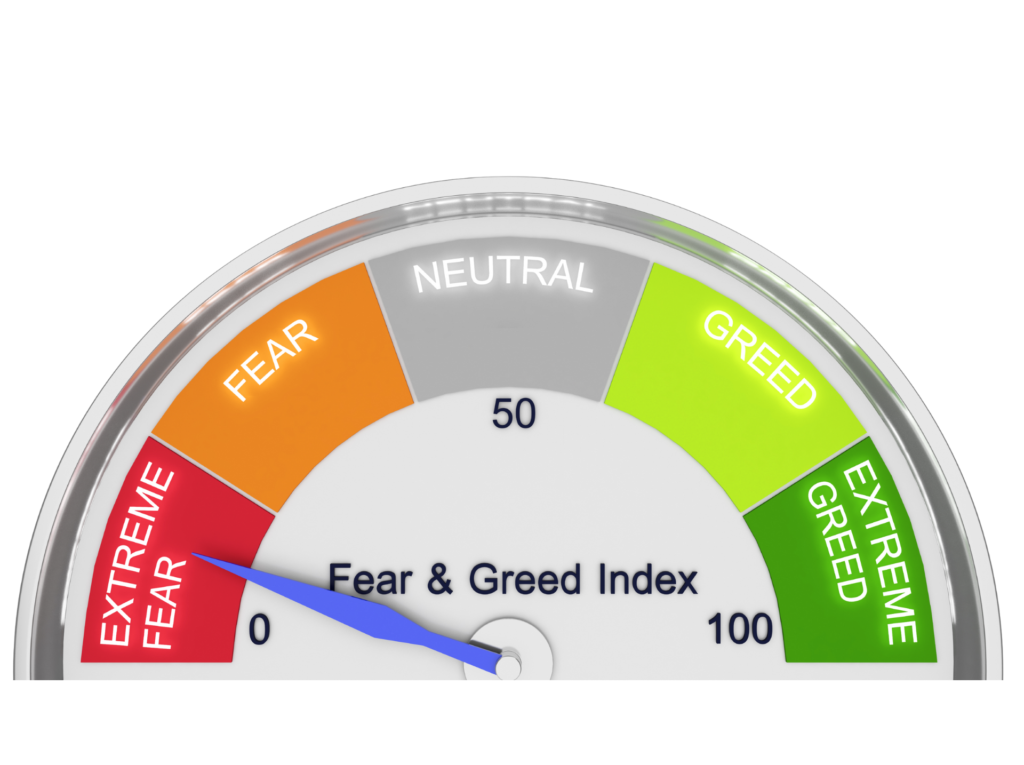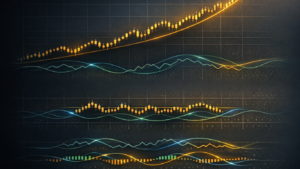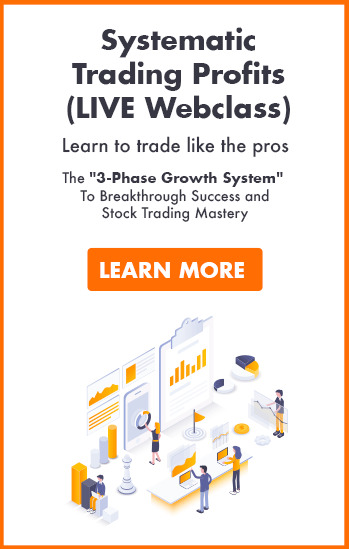Managing trading psychology is often more important than understanding the market. Fear and greed are the two biggest emotional hurdles traders face. Fear can cause you to exit trades too early or avoid opportunities altogether. Greed, on the other hand, can lead to overtrading, holding onto losses, or risking too much. Both can derail your trading strategy.
Here’s what you need to know:
- Fear: Leads to hesitation, premature exits, or paralysis during volatile markets.
- Greed: Causes overtrading, ignoring risk rules, or chasing losses.
- Cognitive biases: Like loss aversion and overconfidence, worsen emotional decisions.
- Solution: A clear trading plan, a journal to track emotions, and techniques like mindfulness and deep breathing can help you stay disciplined.
Traders who focus on improving their mindset report up to a 78% increase in consistency within six months. By sticking to a rule-based, systematic approach, you can limit the influence of emotions and make better decisions.
Identifying Fear and Greed in Your Trading
Spotting the emotional triggers of fear and greed is crucial in maintaining control over your trading decisions. Let’s break down how these emotions, alongside cognitive biases, can influence your trades and what to watch out for.
How Fear Affects Your Decisions
Fear can creep into your trading in subtle but damaging ways. Maybe you hesitate to enter a trade even when your analysis points to a solid opportunity. Or you might cut your profits short by exiting a position too early, simply because you’re worried about potential losses. Fear can also lead to analysis paralysis, where overthinking prevents you from taking timely action.
A vivid example of fear overtaking rational judgment was during the COVID-19 pandemic in early 2020. As global markets plunged in February and March, panic selling dominated. Traders rushed to liquidate positions amidst the uncertainty. Unfortunately, many who sold out during this period missed the rebound that followed.
Fear-driven decisions often stem from emotional reactions rather than logical analysis. Ask yourself: Are you avoiding trades because of anxiety? Are you exiting positions prematurely, even when everything is going as planned? If emotions are steering your choices, it’s time to recalibrate your approach.
How Greed Leads to Overtrading
Greed, on the other hand, can push traders into reckless behaviours that undermine discipline and risk management.
“Greed is the silent saboteur of even the best-laid trading plans. When it takes over, it can turn an otherwise disciplined trader into someone gambling with their account balance.” – Forex GDP
One of the most obvious signs of greed is overtrading – opening too many positions in an attempt to chase bigger profits. This can lead to higher transaction costs, mental fatigue, and unnecessary stress. Other red flags include ignoring stop-loss orders, over-leveraging your account, and holding onto losing trades in the hope they’ll recover.
The story of Nick Leeson is a classic example of greed’s destructive power. His risky trades to recover losses and chase quick profits led to the collapse of Barings Bank in the 1990s. By the time the dust settled, his actions had caused losses exceeding S$1.3 billion, wiping out the bank entirely.
“The market will always be there – your account might not be if you let greed take over.” – FundingPips
If you find yourself trading too frequently, seeing declining account performance despite increased activity, or justifying larger positions while disregarding your risk management rules, it’s a sign that greed might be in the driver’s seat.
Mental Biases That Make Emotions Worse
Adding fuel to the fire, cognitive biases can amplify the effects of fear and greed, further distorting your decision-making.
- Loss aversion: This bias might make you cling to losing trades for too long, hoping they’ll turn around, or exit winning trades prematurely to lock in small gains.
- Confirmation bias: You may find yourself cherry-picking information that supports your existing beliefs while ignoring evidence to the contrary.
- Overconfidence bias: A streak of wins can trick you into thinking you’re invincible, leading to larger, riskier trades that deviate from your plan.
- Recency bias: This bias causes you to overemphasise recent events, such as being overly cautious after a loss or taking on excessive risk after a win.
With emotional mistakes accounting for 95% of trading errors, recognising these biases is a game-changer. Keeping a detailed trading journal is one way to track and address these tendencies. By documenting your decisions, you can reinforce discipline and stay aligned with your strategy. Spotting these patterns early gives you the upper hand in making rational, well-informed choices.
Methods to Control Fear and Greed
Understanding how to manage fear and greed is crucial for maintaining discipline, especially when markets are unpredictable. Start by identifying what triggers these emotions for you and put strategies in place to stay on track, no matter how volatile things get. A clear set of rules is your starting point – this clarity acts as your safety net.
Creating a Clear Trading Plan
A solid trading plan acts as your anchor during turbulent market conditions. When you have predefined rules and criteria, you’re less likely to make rash decisions based on emotional swings like fear or greed.
“Emotional trading is the number one reason why traders fail. It’s not a lack of knowledge or strategy – it’s the inability to follow a structured plan and make objective decisions under pressure.”
Your plan should cover several essential areas to keep emotions in check. Start by setting clear risk management rules: How much are you willing to risk per trade? What’s your maximum acceptable loss? Next, define your entry and exit points so you know exactly when to take profits or cut losses. Include a trade management strategy that outlines how you’ll adjust active positions. Lastly, create methods to handle emotional triggers – this could mean taking a step back after consecutive losses or reviewing your trading journal before initiating new trades.
“Without a plan, you’re reacting to the markets instead of executing a structured process. And in trading, reactivity leads to failure.”
Treat your trading plan as a living document. Use your performance data to refine it regularly, ensuring it evolves as you gain experience.
Using a Trading Journal to Build Discipline
A trading journal is a powerful tool for spotting emotional patterns and reinforcing discipline. Dr. Janice Dorn, a psychiatrist and expert in trading psychology, highlights its importance:
“By reviewing entries in a comprehensive trading journal, one which includes all the aspects of importance regarding a trade, the trader can learn to distance emotions and trade rigorously.”
The secret to effective journaling lies in documenting both technical and emotional aspects of your trades. Make it a habit to record details immediately after executing a trade. Here’s what to note:
| Component | Details to Record |
|---|---|
| Date/Time | Exact timestamp |
| Emotion Rating | Pre- and post-trade emotional scores |
| Trade Details | Entry, exit, position size |
| Market Context | Key levels, volatility |
| Physical Signs | Stress indicators |
| Action Plan | Adjustments for future trades |
By assigning an emotion score (e.g., 1–10) before and after each trade and reviewing your journal regularly, you can identify patterns that may be affecting your decisions. This awareness allows you to tweak your strategies and avoid repeating mistakes.
“You are the problem and you are the solution. Living in the past or the future does nothing but stirs up emotions that impact adversely your trading and other aspects of your life.”
Armed with this data, you’ll be better equipped to tackle emotional challenges head-on.
Simple Techniques to Manage Emotions
When markets get choppy, practical methods to manage your emotions become indispensable. One simple yet effective technique is deep breathing. Slow, deliberate breaths can lower your heart rate and blood pressure, helping you regain composure when panic or excitement starts to creep in.
Mindfulness is another valuable approach. Instead of reacting impulsively, acknowledge your emotions and give yourself a moment to pause before making any decisions. Strategic breaks can also work wonders – step away from your trading platform after two consecutive losses. Use this time to meditate, take a walk, or practise deep breathing exercises to reset your mindset.
Pay attention to physical signals like tense shoulders, a racing heart, or sweaty palms. These are often early warnings of emotional decision-making. When you notice these signs, use them as reminders to apply stress-relief techniques.
“That vacillation between excitement and panic – that is what hurts people financially.”
Another helpful strategy is to put things into perspective. Remind yourself of past market recoveries and try to separate financial concerns from personal well-being. This mental shift can help you stay grounded during downturns.
At Collin Seow Trading Academy, structured methodologies are designed to help traders eliminate emotional biases through disciplined risk management and systematic techniques.
Master Systematic Trading with Collin Seow
Learn proven trading strategies, improve your market timing, and achieve financial success with our expert-led courses and resources.
Building Mental Strength for Long-Term Trading
Strengthening your mindset is a cornerstone of long-term trading success. While mastering fear and greed is part of the equation, true success often comes down to psychological resilience. This is what separates those who thrive in the markets from those who struggle. Developing mental strength takes time and consistent effort – there’s no shortcut to weathering market ups and downs while staying focused on your long-term goals.
Building Confidence Through Small Wins
Confidence in trading doesn’t come from chasing massive gains – it’s built step by step through small, consistent wins. Setting achievable goals and celebrating those milestones helps you build momentum. For instance, instead of aiming to double your account in a month, focus on executing your trading plan flawlessly for a week.
Steve Burns from New Trader U underscores this idea:
“Success in trading isn’t just about understanding market dynamics or having a winning strategy – it’s equally about cultivating a solid mental framework.”
This mental framework starts with recognising and celebrating process-based victories rather than fixating solely on profits.
One effective way to build this confidence is by setting SMART goals – those that are Specific, Measurable, Achievable, Relevant, and Time-bound. For example, instead of saying, “I want to make more money”, you could aim for, “Complete 20 trades while following my risk management rules, ensuring no position exceeds 2% of my account.” This approach shifts your focus from unpredictable market outcomes to behaviours you can control.
Losses, an inevitable part of trading, can also be reframed as learning opportunities. Each setback offers insights into your strategy, risk management, or even your emotional responses. By analysing these moments, you not only strengthen your approach but also build the resilience needed to stick to your long-term plan.
Warren Buffett captures this concept well:
“Success in investing doesn’t correlate with I.Q. once you’re above the level of 125. Once you have ordinary intelligence, what you need is the temperament to control the urges that get other people into trouble in investing.”
These small, cumulative victories lay the groundwork for improving emotional intelligence, a crucial aspect of trading.
How Emotional Intelligence Improves Trading
In trading, emotional intelligence (EI) – which includes self-awareness, self-regulation, motivation, empathy, and resilience – is often more valuable than a high IQ. It enables traders to make better decisions, even under pressure, and maintain consistency over time.
Victor Sperandeo, a renowned trader, puts it plainly:
“The key to trading success is emotional discipline. If intelligence were the key, there would be a lot more people making money trading.”
Building emotional intelligence requires consistent effort and reflection. Before placing a trade, take a moment to assess your emotional state. Are you feeling anxious about recent losses or overly excited about a potential big win? These emotions can cloud your judgement, leading to impulsive decisions.
Practices like mindfulness and meditation can help you stay grounded during volatile market conditions. Even a few minutes of deep breathing before a trading session can clear your mind and reduce the influence of disruptive emotions. Another helpful tool is cognitive reframing – actively changing how you interpret market events to maintain composure when trades don’t go your way.
Connecting with a network of traders or mentors can also provide emotional support. Sharing experiences and discussing trades with others, especially during tough times, can help you stay balanced and avoid the isolation that sometimes leads to poor decision-making.
By combining emotional intelligence with mentorship and ongoing learning, you can build the mental resilience needed for long-term success.
Learning Through Systematic Education and Mentorship
Continuous education is essential for adapting to ever-changing markets. However, not all learning methods are equal – structured education is key to developing the discipline required for emotion-free trading.
Collin Seow Trading Academy offers structured programmes designed to minimise emotional trading. Courses like the Systematic Trader Program teach traders to implement rule-based strategies, eliminating guesswork and emotional interference. These programmes prioritise risk management and disciplined trading, which are critical for building mental toughness.
The Market Timing 101 E-Course provides a strong foundation for identifying when to buy or sell stocks with precision. Meanwhile, the Systematic Trading Profits programme introduces a 3-Phase Growth System that focuses on systematic approaches rather than emotional reactions. These resources equip traders with the tools and mindset needed for consistent performance.
Mentorship and alumni support further enhance this learning process. By connecting with experienced traders who’ve faced similar challenges, you gain practical insights and emotional support during difficult periods. Such guidance is invaluable for building resilience and maintaining focus.
The academy’s emphasis on a systematic approach shifts the focus from profits to process. Regular webinars and educational content keep traders informed about market trends while reinforcing disciplined strategies. This commitment to ongoing learning helps traders prioritise skill development over short-term gains, ultimately strengthening their mental resilience over time.
Emotional Trading vs Systematic Trading
The way you approach trading – whether emotionally or systematically – can significantly influence your long-term success in the market. Both methods have their place, but understanding their differences is key to managing the emotional highs and lows of fear and greed. Emotional trading depends on intuition and snap judgments shaped by personal perceptions of market trends. On the other hand, systematic trading relies on a set of predefined rules, stripping away the influence of human emotion. This distinction often determines whether a trader succumbs to psychological traps or maintains a disciplined, consistent approach.
Benefits of Systematic Trading
Systematic trading offers several advantages that directly address the psychological challenges traders face. The most notable benefit is the ability to detach emotionally from decisions, as predefined rules limit the sway of fear and greed.
Consistency becomes much more attainable when emotions are removed from the equation. As David Pieper, Co-Founder and Systematic Strategies Specialist at Intalcon GmbH, puts it:
“To become successful as a portfolio manager or trader, you have to overcome many hurdles. In addition to a profitable trading strategy and good money management, there is one central success factor: psychology.”
By relying on a structured framework, systematic trading operates independently of emotional fluctuations, ensuring steadier execution over time.
Risk management also improves with systematic trading. Research shows that traders using predefined stop-loss rules experience 65% less emotional reactivity. This reduction in emotional influence leads to better risk control and more consistent results.
Another major advantage is backtesting, which allows you to test strategies against historical data before committing real money. Knowing that a strategy has performed well in various market conditions builds confidence and reduces the anxiety that often leads to impulsive, emotion-driven decisions.
Scalability is easier to achieve with systematic trading too. By following rules, traders can handle larger positions or multiple markets simultaneously without the emotional strain that comes with manual decision-making.
Finally, the speed of systematic trading is a game-changer. Decisions are executed instantly based on predefined criteria, eliminating hesitation and reducing the risk of missing profitable opportunities.
At Collin Seow Trading Academy, the Systematic Trader Program embraces these principles. The programme focuses on teaching rule-based strategies that remove guesswork, enabling traders to navigate the market with confidence and consistency – something emotional trading rarely delivers.
Comparison: Emotional vs Systematic Trading
The differences between emotional and systematic trading become especially clear when you compare their core traits. Each approach has unique characteristics that affect how traders manage fear, greed, and overall performance. Here’s a side-by-side look:
| Feature | Emotional Trading | Systematic Trading |
|---|---|---|
| Decision-Making | Intuition and subjective judgement | Predefined rules and algorithms |
| Emotional Influence | High susceptibility to fear and greed | Minimal emotional interference |
| Consistency | Variable and mood-dependent | Consistent execution regardless of emotions |
| Risk Management | Error-prone under stress | Rule-based and consistent risk control |
| Adaptability | Quick reaction to new information | Less adaptable without predefined adjustments |
| Scalability | Limited by human capacity | Highly scalable across multiple markets |
| Psychological Strain | High stress and emotional exhaustion | Lower stress with a process-focused approach |
| Learning Curve | Relies on experience and intuition | Requires systematic strategy development |
Systematic trading often outshines emotional trading, especially in high-pressure moments. While emotional traders may hesitate or second-guess themselves, systematic traders execute decisions swiftly and without hesitation.
Long-term profitability tends to favour systematic methods. Studies show that systematic trend-following fund managers consistently achieve higher returns compared to other categories. This success is largely due to their ability to stick to proven strategies without letting emotions interfere.
Another key difference is how each approach handles market volatility. Emotional traders are more likely to panic during downturns or become overconfident during bull runs. In contrast, systematic traders follow rules designed to handle a range of market scenarios, ensuring a steady hand even in turbulent conditions.
It’s worth noting that losses can feel twice as painful as equivalent gains are pleasurable. This psychological bias makes emotional trading particularly challenging, as losses can disproportionately affect decision-making. Systematic trading helps counteract this bias by framing wins and losses as mere data points rather than emotional events.
These distinctions explain why many successful traders transition to systematic trading. By channelling human judgment into well-defined systems, they create reliable strategies that hold up even under the stress of unpredictable markets.
Conclusion: Controlling Fear and Greed for Trading Success
Managing fear and greed isn’t just a nice-to-have skill in trading; it’s the backbone of long-term success. The “Rule of 90” paints a stark picture – 90% of new traders lose 90% of their initial capital within 90 days. On top of that, emotional trading can slash returns by 15–25%, while revenge trading might drain 25–40% of your trading capital. These numbers highlight a simple truth: controlling emotions often matters more than knowing the market inside out.
A systematic trading approach helps cut through emotional noise, allowing you to make decisions that are consistent and well-reasoned. This kind of discipline can protect your capital even when markets are unpredictable.
To stay on track, regularly evaluate and adjust your trading strategies. Stick to a trading plan, keep a journal to track your trades and emotions, and enforce strict risk management rules. For instance, limiting each trade to just 1–2% of your capital can prevent losses from spiralling into emotional reactions. Building emotional resilience takes time, but it’s achievable through education and consistent practice.
Structured learning is a game-changer for developing discipline. Programmes like the Collin Seow Trading Academy’s Systematic Trader Program focus on rule-based strategies that reduce emotional triggers. This approach prioritises emotional awareness, self-discipline, and strategic thinking – key elements for sustained trading success.
Ultimately, the choice is yours: let emotions dictate your trades, or embrace a systematic approach that helps you weather setbacks and thrive in the long run. By mastering emotional control and committing to disciplined methods, you position yourself for steady, reliable success that goes far beyond any single trade or market cycle.
FAQs
How can I recognise if fear or greed is affecting my trading decisions?
To spot whether fear or greed is creeping into your trading decisions, pay attention to your behaviour. Fear often shows itself through hesitation, skipping trades, or closing positions too soon to prevent potential losses. On the flip side, greed might look like overconfidence, holding onto profitable trades for too long, or pursuing high-risk opportunities in the hope of quick rewards.
Keeping a trading journal can be a game-changer. By documenting your trades and the emotions behind them, you can uncover patterns that might not be obvious at first glance. Taking time to review your trades and think about your decision-making process can offer key insights into how your emotions might be shaping your strategies. With this awareness, you can work towards building a more disciplined and structured trading approach.
How can I use emotional intelligence to improve my trading decisions?
To improve your trading decisions with a better understanding of your emotions, start by maintaining a trading journal. Use it to jot down how you feel during trades – this can help you spot patterns and recognise what triggers emotions like fear or greed. Over time, you’ll gain insights into how these feelings might influence your decisions.
Work on self-awareness and self-regulation by taking a moment to pause before reacting to emotional impulses. Stick to clear, predefined trading rules, such as setting specific entry and exit points, to reduce the impact of emotions on your actions. With consistent reflection and practice, you’ll build the discipline to stay calm and focused, even during unpredictable market swings.
How does a systematic trading approach help traders manage emotions like fear and greed?
A systematic trading approach offers traders a clear, rule-based framework that takes the guesswork out of decision-making. By sticking to a structured plan, it helps to curb impulsive reactions often triggered by fear or greed. Every trade follows pre-set strategies and risk management rules, ensuring decisions are grounded and not swayed by emotions.
This method emphasises consistency and discipline, helping traders avoid emotional pitfalls, even during unpredictable market swings. With a focus on logic and structure, systematic trading supports more objective decisions, paving the way for steady progress in the trading journey.












